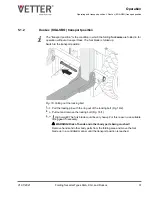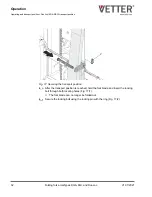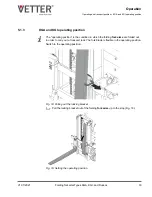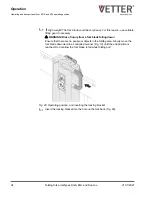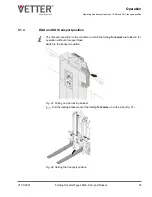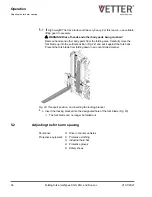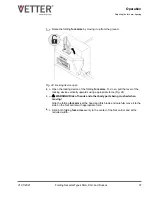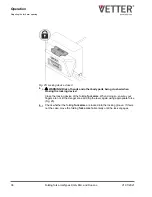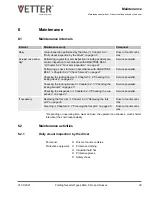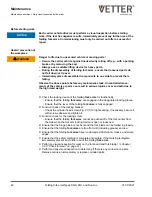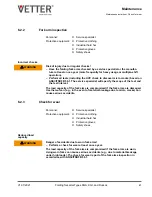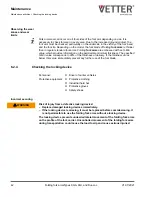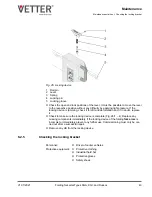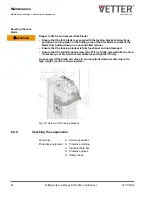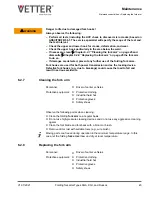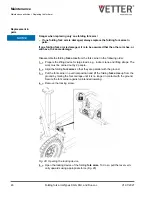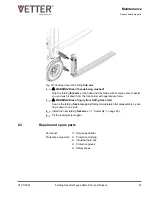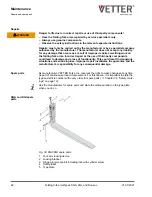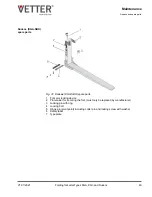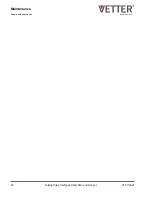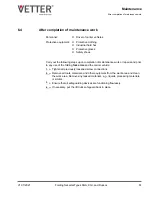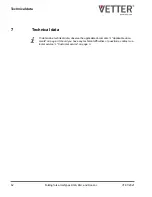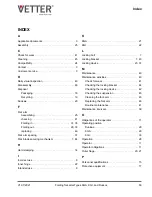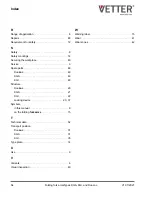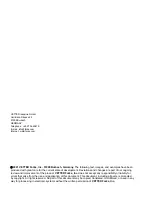
Danger to life due to damaged fork hooks!
Always observe the following:
– Perform all tests (including the UVV check to discover micro cracks) based on
ANSI/ITSDF B56.1. The service specialist will specify the scope of the test and
the test interval.
– Check the upper and lower hook for cracks, deformation, and wear.
– Check the upper hook particularly in the area below the weld.
– If necessary, clean
Chapter 6.2.7 “Cleaning the fork arm” on page 45 and
Chapter 6.2.8 “Replacing the fork arm” on page 45 the fork arm
to do so.
– If damages are detected, prevent any further use of the folding fork arms.
Fork hooks are used for both power transmission and as the locking device.
Defective fork hooks (e.g., due to breakage) could cause the load to fall and
result in serious accidents.
6.2.7
Cleaning the fork arm
Personnel:
n
Driver of carrier vehicles
Protective equipment:
n
Protective clothing
n
Industrial hard hat
n
Protective gloves
n
Safety shoes
Observe the following points when cleaning:
n
Clean the folding
fork arm
on a regular basis.
n
Do not use high-pressure cleaning devices and do not use any aggressive cleaning
agents.
n
Clean the fork blade and fork back with a broom or brush.
n
Remove dirt or rust with suitable tools (e.g., wire brush).
Moving parts can freeze during operation in the minimum temperature range. In this
case, let the folding fork arms thaw and dry at room temperature.
6.2.8
Replacing the fork arm
Personnel:
n
Driver of carrier vehicles
Protective equipment:
n
Protective clothing
n
Industrial hard hat
n
Protective gloves
n
Safety shoes
L
WARNING
Maintenance
Maintenance activities > Replacing the fork arm
V1.07/2021
Folding fork armsTypes KGA, KGI, and DuoLoc
45

